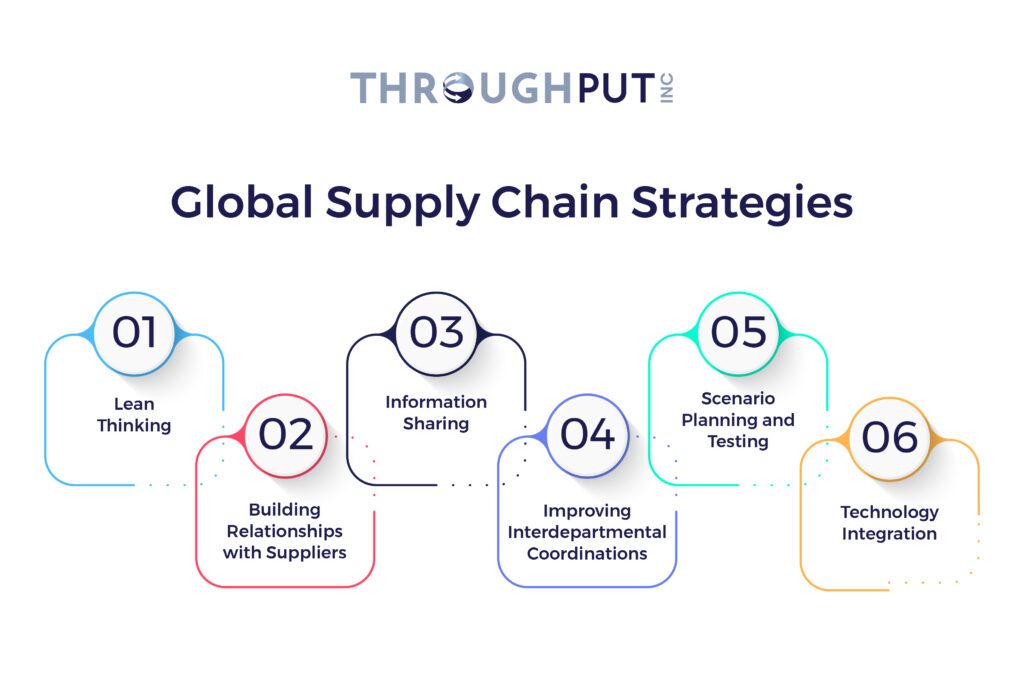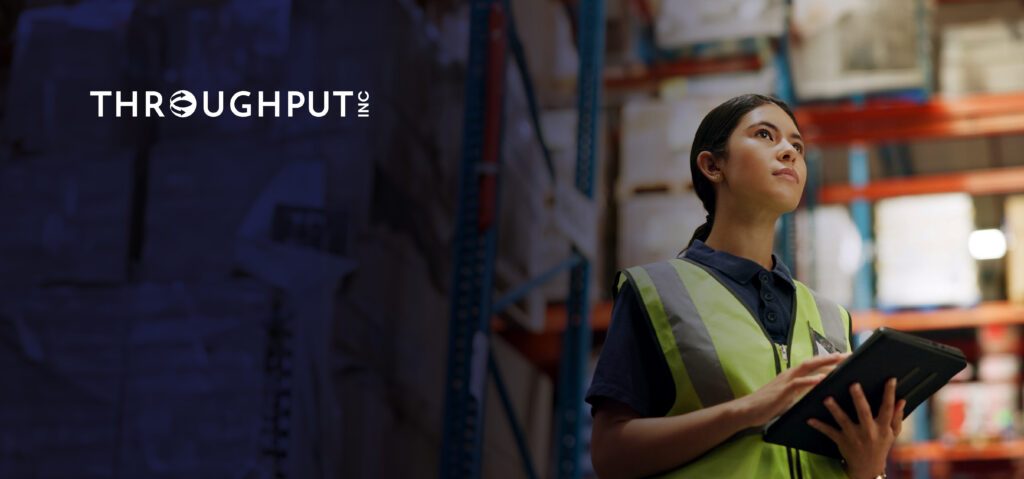In the grand theater of business, global supply chain strategies is the star performer that keeps the show running smoothly. It’s the unsung hero that ensures companies stay in the limelight, basking in the glow of profitability and competitiveness.
So, if you’re a supply chain manager, operator, or executive, it’s time to pull back the curtain and look at the key aspects of supply chain management.
This article is your backstage pass to understanding global supply chain management strategies, the benefits of a sturdy supply chain strategy, and the different global supply chain strategies.
What is a Global Supply Chain Strategy?
A global supply chain strategy is a plan of distribution of the goods and services throughout a transnational company’s global network to maximize profit and minimize waste. The strategy outlines how a company will manage its supply chain on a global scale.
Imagine a grand orchestra, with each instrument playing its part to create a harmonious symphony. That’s what supply chain management is all about. It involves coordinating and integrating a company and its upstream and downstream partners to effectively supply its customers with products.
A global supply chain strategy is the conductor’s score, outlining how a company will manage its supply chain on a global scale. It’s about managing the flow of goods and services from suppliers to customers across different countries and regions.
The history of supply chain management is a fascinating tale that dates back to the 1960s. Picture the US market as a stage dominated by the big players: AMC, Mercedes, BMW, Porsche, and Jaguar. Fast forward to today, and the stage has expanded globally.
The growth of global markets has led to shorter product life cycles, greater customization, and faster response to market demands. For instance, car manufacturers now launch a new model in less than 4 years, a far cry from the 10-year cycles of yesteryears.
What are the Benefits of a Resilient Supply Chain Strategy?
A resilient global supply chain strategy is like a well-rehearsed actor, always ready to identify potential risks and develop strategies to mitigate them. This proactive approach enables manufacturers to respond quickly to disruptions and minimize the impact on their operations.
The benefits of a resilient supply chain strategy are as impressive as a standing ovation:
- Improved customer service since the resilient supply chain strategy ensures that customers receive their orders on time and in good condition, resulting in higher customer satisfaction and loyalty.
- Accurate forecasting enables manufacturers to conduct precise demand forecasting and plan production accordingly, reducing the risk of overproduction or supply shortages.
- High capacity utilization results in higher efficiency and lower costs.
- Reduced overstocking due to optimized inventory levels that also reduce the associated costs.
What are the Characteristics of a Global Supply Chain Strategy?
The characteristics of a global supply chain strategy are like the key elements of a successful performance: integration, coordination, and the value chain perspective. Integration is the harmony achieved when all partners in the supply chain work together to achieve common goals.
Coordination is synchronizing all supply chain activities to ensure they work together effectively. The value chain perspective involves identifying all activities that add value to the product or service and optimizing these activities to reduce costs and improve quality.
What are the Different Types of Global Supply Chain Models?
The global economy is a stage where different types of global supply chains strategy perform, such as multinational companies, global companies, and domestic companies.
The forces shaping the global economy include the global market, technological, global cost, and political and macroeconomic forces.
These forces are usually the issues viewed directly from a competitive perspective. For example, increased foreign competition makes competing in the local market more challenging.
Different types of supply chain models can affect a company’s supply chain management:
- The continuous flow model is the best choice for industries and companies that operate with stability. Stability is essential for this model because it is needed on both sides, i.e., by the manufacturer and the buyer.
- The fast chain is best suited for companies that need a fast turnaround time. It is ideal for companies operating in the fashion industry or that need to react quickly to market changes.
- The efficient chain model is ideal for companies operating in the manufacturing industry or requiring a high degree of automation.
- The agile model is best suited for companies that operate in the technology industry or require a high degree of customization and flexibility.
- The individually configured model is the best choice for companies that require a high degree of customization. It is ideal for companies operating in the automotive industry or for companies that require a high level of customization.
- The flexible model is the best choice for companies that require a high degree of adaptability. It is ideal for companies operating in the healthcare sector or that require a high degree of responsiveness.
How to Identify Potential Risks for Global Supply Chain Management?
In the grand theater of 2024, disruptions to supply chain operations are the unexpected plot twists that keep the audience on the edge of their seats. Supply chain managers must identify potential risks and develop strategies to mitigate them by understanding and addressing the sources of uncertainty within their supply chains.
These sources of uncertainty can be categorized into four main areas: demand side, supply side, manufacturing processes, and planning and control systems.
Demand-side uncertainty refers to the unpredictability of customer needs. As information about customer needs flows upstream through the supply chain, its accuracy can become distorted, leading to less reliable data. This distortion can cause inefficiencies and is known as the “Bullwhip Effect.”
Supply-side uncertainty arises from unpredictable disruptions in the material flow from suppliers. Such disruptions include geopolitical unrest, the spread of disease, natural disasters, and technology failures.
Inefficiencies in the manufacturing process can add to uncertainty. For instance, limited planning horizons in Material Requirements Planning (MRP) systems can contribute to this manufacturing process uncertainty.
If the systems for planning and controlling the supply chain are effectively managed, they can increase certainty.
Global Supply Chain Strategies for 2024
Understanding the mentioned sources of uncertainty and implementing global supply chain strategies to counter them helps supply chain managers effectively identify potential risks and successfully mitigate them.
To mitigate these risks, supply chain managers can employ several approaches:

- Lean Thinking
This concept focuses on eliminating waste and inefficiency within a process. It can be applied to manufacturing and supply to improve efficiency and reduce waste. - Building Relationships with Suppliers
Integrating suppliers into the supply chain can reduce uncertainty. It involves sharing information and allowing suppliers direct access to consumer information, enabling them to be proactive rather than reactive. - Information Sharing
Sharing information throughout the value chain can reduce the magnitude of the “Bullwhip Effect” and add value to the overall supply chain. - Improving Interdepartmental Coordination
Ensuring that internal information flows are planned, expected, and working correctly can reduce uncertainty. - Scenario Planning and Testing
This involves determining the best and worst outcomes and testing the supply chain on these scenarios to see how it would react. This can help prepare for unforeseen events and reduce uncertainty. - Technology Integration
Seamless communication with technology integration through an IT system can mitigate risk and uncertainty by allowing quick reactions to significant disruptions.
Implementation of AI software for Global Supply Chain Planning
AI software is the rising star that has the potential to revolutionize global supply chain planning. It can help manufacturers to forecast demand more accurately, optimize inventory levels, and improve logistics and distribution.
AI software also helps manufacturers identify potential risks and develop strategies to mitigate them, enabling them to respond quickly to disruptions and minimize the impact on their operations.
Incorporating AI software into global supply chain planning requires a strategic approach. Manufacturers need to identify the areas of their supply chain that can benefit from AI software and develop a plan for its adoption.
They also need to ensure that their employees are trained to use the software effectively and have the necessary infrastructure to support them.
Leveraging Throughput for Global Supply Chain Management
Let’s imagine for a moment that you’re a maestro, conducting an orchestra of operations managers. Your baton? ThroughPut’s Demand-driven supply chain planning software.
This isn’t just any software, it’s almost a digital maestro in its own right, conducting the world’s leading continuous improvement operations principles.
It’s like having Beethoven and Mozart working together to create a masterpiece of operational excellence.
This software doesn’t just analyze your industrial data, it conducts it in real-time, identifying the off-key notes of potential bottlenecks that could cost you millions in delays and lost revenue. It’s like having a virtuoso violinist who can spot a flat note before it even happens.
ThroughPut is your orchestra’s first chair, leading the way in meeting your supply chain goals. It’s like a virtuoso soloist, nailing down bottlenecks and eliminating inventory waste to achieve end-to-end efficiencies.
It’s not just about playing the notes on the page, it’s about creating a harmonious performance that leaves the audience – in this case, your customers – in awe.
The encore? An efficient and optimal smart supply chain plan that saves you time, money, and resources. It’s like a standing ovation at the end of a performance, except instead of applause, you’re rewarded with a streamlined, efficient operation that hits all the right notes.
So, take a bow, maestro. With ThroughPut, you’re not just conducting business, you’re creating a masterpiece.
If you wish to learn more about our supply chain planning and optimization software to help you in creating your supply chain plans, schedule a demo.

